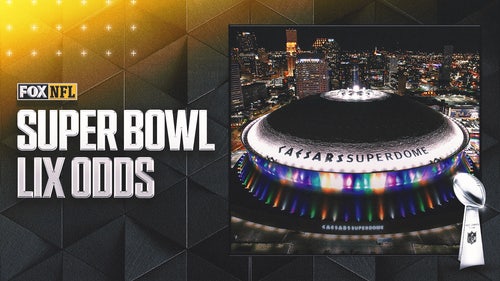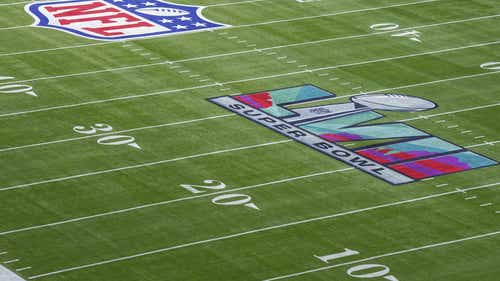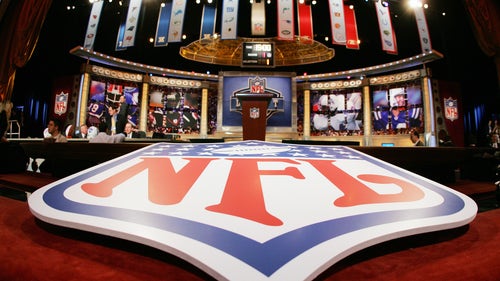
Top-testing helmet being used by small number of players
NEW YORK (AP) The helmet that performed best in NFL testing this year is being used by 50 players spread across only half of the NFL teams.
Still, its developer is ''thrilled'' with that number, while expecting the VICIS Zero1 to catch on the way Larry Fitzgerald snags passes.
Yes, it seems strange that a piece of equipment some have called revolutionary and most have admitted is a clear step toward safer equipment isn't in wider use. The new product topped independent testing of 33 helmets conducted in Canada by the league and NFLPA.
The results, which included testing the impact at three velocities and in eight locations on each helmet, were sent to each team and to the players.
The Zero 1 is the first to account for rotational as well as linear impact. Scientific studies have indicated that rotational impact has more correlation with concussions.
David Marver, who created the helmet, was prepared for a slow adoption of the Zero1.
''Players are traditional and superstitious and have to be persuaded to try new helmets,'' he says. ''There's a group of NFL players who are very concerned about their health and very interested (in the helmet). There are many who care about style; they want it to pass the eye test. It's a mindset on new innovations.''
That mindset apparently doesn't exist among doctors and scientists involved in either the testing methods or research into the efficiency and protective qualities of equipment.
When the VICIS helmet, which was nearly five years in the making, was tested it produced the lowest average linear and rotational measures of head motion across all impact speeds.
A novel helmet design comprised of a more compliant exterior shell and an inner layer of buckling columns to absorb energy led to the top rating.
''The VICIS helmet results demonstrate that additional reductions in impact severity beyond those of current helmets can be achieved by re-examining the components and function of football helmets,'' says Dr. Jeff Crandall, director of the Center for Applied Biomechanics at the University of Virginia.
''The (NFL's) Head Health Tech and other sponsored challenges are intended to stimulate the consideration of new design ideas and the development of new materials and concepts for impact mitigation.
''While we have seen a new level of protection afforded by the VICIS helmet in our laboratory testing, we believe that additional gains in protection can be achieved given expanded data, innovative test methodologies, state-of-the-art engineering tools, and financial incentives.''
Marver points out that his Zero1 not only is innovative in its design, but it takes yet another step by using Oakley's Edge Shield visor.
When Seahawks star receiver Doug Baldwin saw that visor, he wanted to know how quickly he could get one. Several teammates soon followed up with similar queries, though only six players currently are wearing the Edge Shield.
''The Zero1 is compatible with any visors, but to get the wide field of vision players sought, many current visors don't reach all the way around to do that,'' Marver says. ''We went to Oakley and they came up with it.
''The idea is to provide the best possible equipment in performance, protection and comfort.''
Oakley actually has launched its own helmets for snow sports and is in the process of doing so for cycling. That's how the company became aware of VICIS. That Oakley could design a visor with improved field of vision and contrast made for a quick marriage.
Historically, though, there have been too many poor performing visors, particularly for football and for hockey.
How often do fans see NHL players using towels to wipe off the moisture or condensation - or just plain fog - from their visors?
While NHL rules have limited the number of pro hockey players who don't wear visors, there's no hiding that a puck or stick to the face can be far more damaging than what normally occurs on a football field.
''Vision is a key driver in your performance and I think there is a lack of recognition of what effect poor optics can have on your performance,'' says Ryan Saylor, Oakley's vice president of advanced product development.
''Our broader aim as a brand is to drive safety and performance. My personal belief is really based on conversations we were having before, through athletes recognizing they can have a level of production in conjunction with a level of comfort and performance benefits. So they would not want to go on the field without this type protection.''
While the Edge Shield visor is only available with the Zero1 helmet, its retail price is between $90 and $125. The cost for the VICIS helmet, though, is $1,500.
That shouldn't make an NFL player think twice, but it can limit its attractiveness to some colleges and, in particular, for youth sports.
But Marver says his company has begun taking reservations from parents and grandparents of high school players for smaller and lighter helmets that cost less next year.
''We chose the most challenging path, going for the elite athletes first,'' Marver admits. ''We needed to establish our credibility, and the test results helped do that. We started with a clean sheet of paper, with a mix of experts involved.
''We spent three years working with the NFL and the NFLPA and the teams. We had to ask a lot of questions and do a lot of listening. The equipment managers provided the most valuable input. They are doing this every day.
''We see us as acting as a catalyst in the industry. We hope to raise the level of discourse in the industry.''
---
For more NFL coverage: http://www.pro32.ap.org and http://www.twitter.com/AP-NFL










